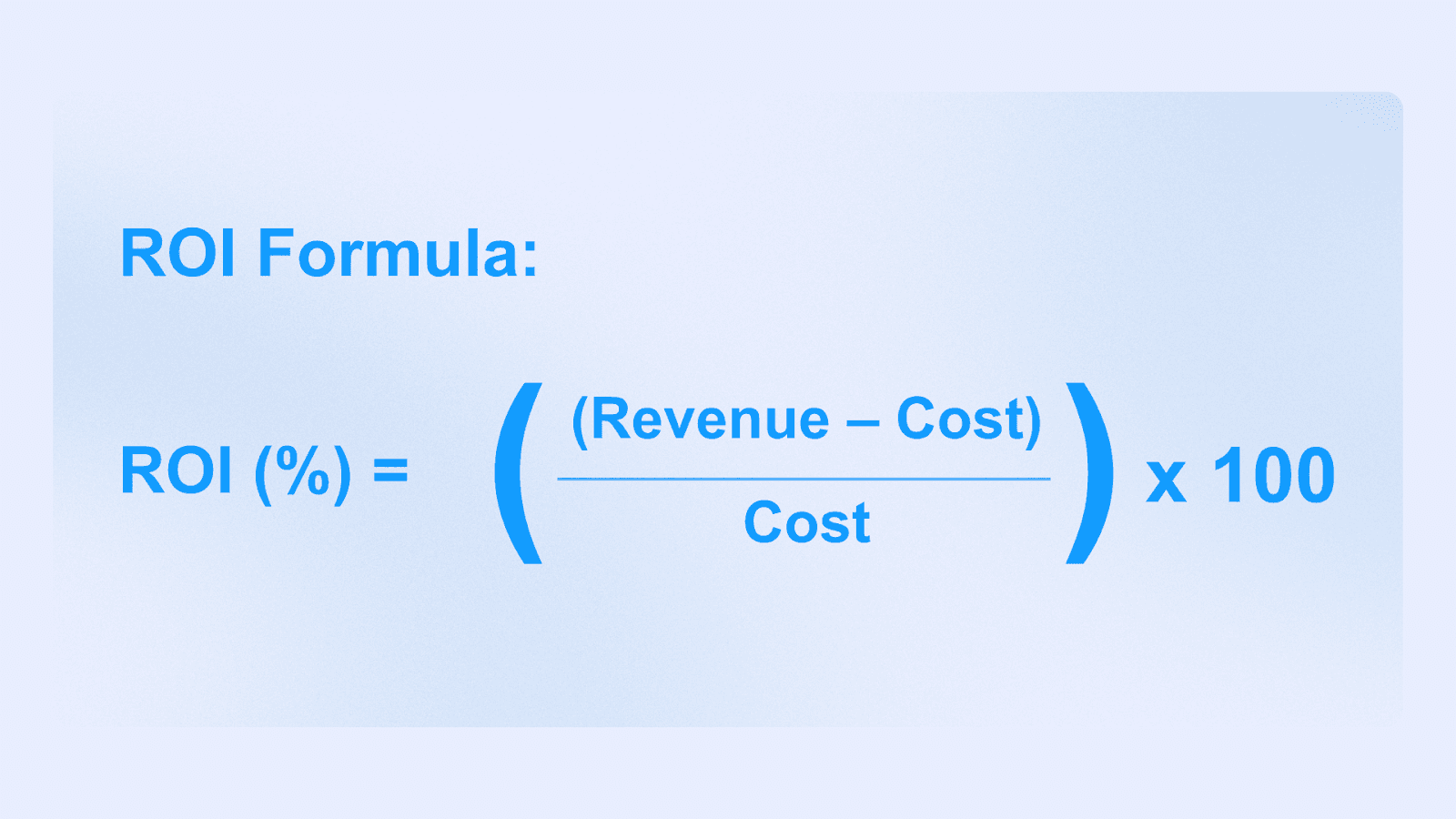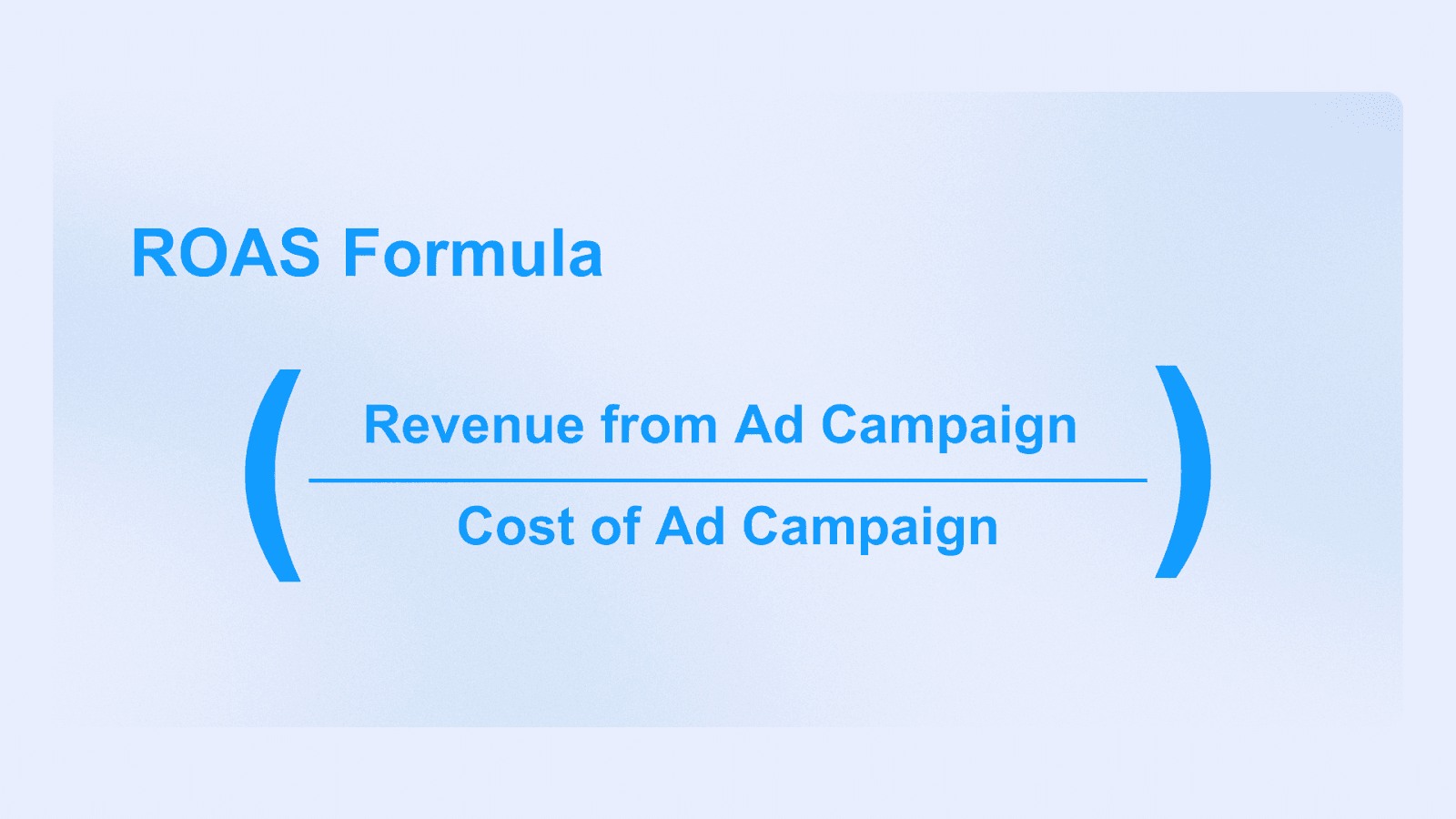Understanding the Difference between ROAS and ROI in Marketing
"Half the money I spend on advertising is wasted; the trouble is, I don't know which half." – John Wanamaker.
With mobile gaming revenue climbing 4% year-over-year, driven by Strategy, Puzzle, and Action genres (State of Mobile 2025 Report), growth isn’t just about user acquisition—it’s about profitability. ROAS marketing plays a key role in focusing your efforts on campaigns that deliver true value.
While ROI measures the overall profitability of your campaigns, ROAS zeroes in on how effectively each dollar spent drives revenue. Together, they provide a clear view of your ad performance, helping you build smarter, more profitable strategies.
In this blog, we’ll break down ROI and ROAS and show you how to use them to improve your user acquisition efforts. Let’s get started!
What is ROI?
ROI, or Return on Investment, measures how profitable your efforts are, acting as a financial snapshot of your investments. It calculates the profit generated relative to the costs incurred, answering the critical question: "Is this effort worth it?"
Beyond being just a number, ROI guides decision-making. In industries where growth is slowing and costs are increasing, understanding ROI helps allocate resources effectively. For example, in marketing, it highlights which campaigns drive revenue and which drain resources. A consistently positive ROI signals that your strategies align with your business goals.
How to Calculate ROI?
The formula is simple:
ROI (%) = [(Revenue – Cost) / Cost] × 100

Example:
You invest $30,000 in developing and marketing a subscription-based app. After a year, the app generates $75,000 in revenue from subscriptions and premium features.
ROI = [(75,000 – 30,000) / 30,000] × 100 = 150%
This means for every dollar spent, you earned your dollar back plus an additional 1.5 dollars. While a 150% ROI is exceptional, a realistic target for most new apps in the early stages is 30–60%.
ROI for User Acquisition
To calculate ROI for user acquisition, account for all costs, including development, marketing, and operations. Profits typically come from channels like in-app purchases (IAPs) and in-app advertisements (IAA). Combining these monetization strategies often yields better outcomes than relying on one alone.
For instance, a subscription-based app might calculate ROI as follows:
Revenue: $80,000 from subscriptions and $40,000 from premium features.
Costs: $100,000 for app development, marketing, and operations.
ROI = [(120,000 – 100,000) / 100,000] × 100 = 20%
This 20% ROI shows profitability and helps refine strategies for maximizing returns.
Now that we understand the importance of ROI let’s turn our attention to another critical metric: ROAS.
What is ROAS?
ROAS (Return on Advertising Spend) measures the revenue earned for every dollar spent on advertising. It’s a powerful way to evaluate how effectively your ad campaigns generate financial returns. By focusing on ROAS, you can directly link ad spending to revenue outcomes, making it essential for optimizing marketing efforts.
ROAS marketing is crucial because it helps you understand the financial success of your ad campaigns. It enables you to identify high-performing strategies, optimize budget allocation, and improve underperforming campaigns. A high ROAS indicates efficient spending, while a low ROAS signals areas for refinement.
How to Calculate ROAS?
Calculating ROAS is simple:
[ROAS = Revenue from Ad Campaign ÷ Cost of Ad Campaign]

For example:
Let’s say you invest $5,000 in advertising, and your campaign generates $12,000 in revenue. Divide the revenue by the ad spend:
Revenue from Ad Campaign: $12,000
Cost of Ad Campaign: $5,000
ROAS: $12,000 ÷ $5,000 = 2.4
This means for every dollar spent on ads, you earned $2.40 in revenue.
ROAS for User Acquisition
In user acquisition campaigns, ROAS shows how effectively your ads drive revenue-generating actions like app installs or subscriptions.
For example:
You spend $4,000 on ads for a subscription app.
These ads result in 800 new subscribers, each paying $10.
Total Revenue: 800 × $10 = $8,000
ROAS: $8,000 ÷ $4,000 = 2
This indicates that every dollar spent on ads generated $2 in revenue. ROAS helps you refine your campaigns to attract more valuable users and scale efficiently.
With both ROI and ROAS defined, let’s compare them to uncover their unique applications and how they complement each other.
Also Read: Mastering ROAS for Mobile Games and Apps: The Ultimate Guide
ROI vs. ROAS: Key Differences and Applications
Understanding the differences between ROI and ROAS is crucial to making informed decisions when evaluating marketing performance. Each metric serves a unique purpose and provides distinct insights that can effectively guide strategy and optimization.
Criteria | ROI (Return on Investment) | ROAS (Return on Ad Spend) |
Definition | Measures overall profitability by accounting for all campaign-related costs. | Focuses solely on ad-specific efficiency, calculating the revenue generated per dollar spent on advertising. |
Primary Objective | Evaluates total profitability and strategic impact across campaigns. | Tracks and optimizes ad-level performance to maximize efficiency. |
Strengths | - Comprehensive profitability view. - Useful for long-term planning and budget justification. | - Proactive insights for campaign adjustments. - Simple calculation using ad spend and revenue. |
Weaknesses | - Challenging to calculate multiple indirect costs (e.g., salaries, tools). - Time-intensive. | - Ignores broader costs like tools and operations. - Limited to ad-specific insights. |
Best Use Cases | - Multi-channel campaign evaluations. - Assessing long-term marketing performance. - Strategic decision-making. | - Fine-tuning PPC or social media campaigns. - Evaluating specific creative or platform efficiency. |
Example | A mobile gaming company analyzing the total profitability of a holiday promotion across platforms. | Identifying the top-performing ad creatives of mobile games for the same holiday campaign. |
By combining both metrics strategically, marketers can achieve a comprehensive understanding of campaign success—balancing tactical efficiency with long-term profitability. Having understood their differences, let’s explore when to prioritize each metric to align with your business goals.
ROI vs. ROAS: When to Use Each?
ROI measures overall profitability, which is ideal for strategic decisions like attracting venture capital or planning growth. It’s the big-picture metric to assess whether your entire business is profitable.
ROAS Marketing evaluates the efficiency of ad spend, providing granular insights into campaign or channel performance. It’s essential for optimizing user acquisition (UA) and pinpointing high-ROAS users for retargeting.
Key Use Cases
Use ROAS to improve UA efficiency by identifying campaigns with high revenue returns on ad spend. For example, focus on cohorts generating 200% ROAS within 7 days to maximize lifetime value (LTV).
Use ROI to evaluate overall financial performance across departments, especially when preparing for funding or scaling.
Now, let’s look at best practices for combining these metrics effectively.
Best Practices
Set clear goals for both metrics (e.g., 150% ROAS within 30 days).
Track ROI and ROAS over specific timeframes (e.g., day 0, day 7, day 30).
Use attribution models that reflect the customer journey for accurate measurement.
Combine ROI, ROAS, and other metrics (e.g., CAC) for a holistic performance view.
ROI shows profitability, while ROAS drives ad efficiency. Together, they empower data-driven decisions to grow your app profitably. Focus on ROAS marketing to maximize ad performance and ROI for strategic growth. Building on these best practices, let’s explore tools and strategies to optimize user acquisition campaigns.
Optimizing UA Campaigns: Insights, Tools, and Tracking Strategies
Tracking Return on Ad Spend (ROAS) and Return on Investment (ROI) is essential for refining user acquisition (UA) campaigns. By analyzing these metrics, you can identify which channels and campaigns drive the highest-quality users and allocate your budget more effectively.
For example, businesses focusing on ROAS data improved user retention by prioritizing campaigns with the highest lifetime value (LTV). Appier's guide highlights that users who make in-app purchases within the first 24 to 48 hours are more likely to continue spending, thus enhancing ROAS. Optimizing campaigns based on this data can significantly boost ROI, making it a critical practice for UA teams.
Monitor ROAS Effectively for Mobile Games and Apps with Segwise
Maximizing Return on Ad Spend (ROAS) for mobile games and apps requires a robust approach to user acquisition (UA). Tools like Segwise integrate seamlessly with Mobile Measurement Partners (MMPs) to deliver actionable insights and streamline performance tracking.
A multi-channel tracking strategy further enhances ROI by consolidating data across campaigns. For example, integrating a CRM with platforms like Google Analytics helps track user journeys and identify high-performing channels. According to a McKinsey report, businesses using integrated ROI tracking see a 20–25% boost in efficiency.
Segwise strengthens these efforts with:
AI Monitoring: Automatically analyzes data from MMPs to identify issues affecting UA campaigns and prioritizes solutions.
AI Creative Insights: Tags and evaluates ad creatives across networks, helping you understand what resonates with users and boosting creative performance.
ROAS Forecasting:Predicts ROAS and payback periods to minimize financial risks and enable data-driven UA strategies.
No-Code Integration: Streamlines the setup process by connecting seamlessly with all data sources, allowing you to focus on growth without technical barriers.
With Segwise, gaming studios and app marketers can reduce Cost Per Installation (CPI), improve ad spend efficiency, and attract high-value users for sustainable ROAS and ROI growth.
Conclusion
Maximizing user acquisition (UA) starts with focusing on two essential metrics: ROI shows you the big picture of your profitability, while ROAS tells you how effectively your ad spend turns into revenue. Think of ROI as a measure of overall business health and ROAS as a tool to fine-tune your campaigns for better results. Together, they help you spend smarter and grow sustainably. By setting clear goals, tracking across channels, and acting on insights, you can scale your UA strategies with confidence.
Maximize your UA efficiency with Segwise - smarter spending, better ROI, and scalable growth. Our AI-powered platform optimizes ad creatives, tracks performance, and forecasts ROAS to make every dollar count. Plus, seamless integration with Adjust, Appsflyer, and top ad networks gives you a complete view of your marketing performance.
Start optimizing today—try Segwise free for 14 days!

Comments
Your comment has been submitted successfully!